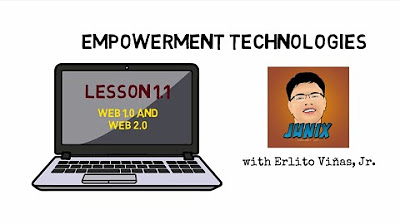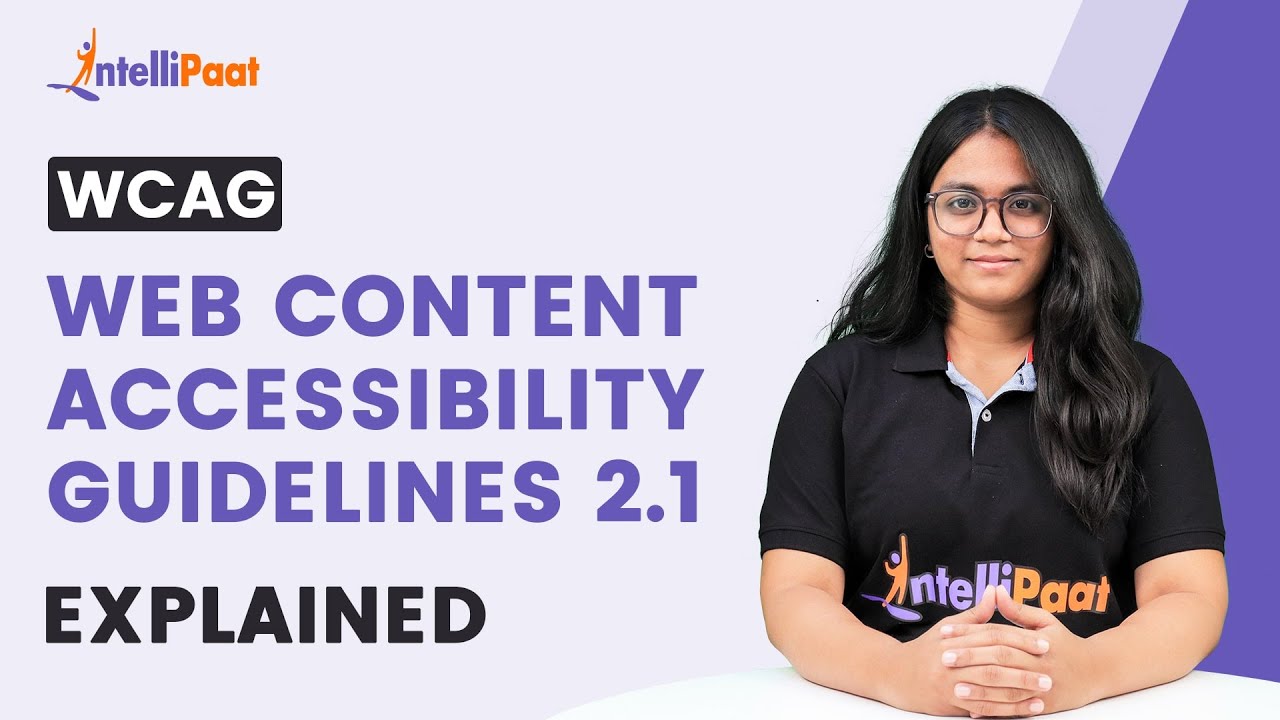Evolution of the Web (Web 1.0, Web 2.0, Web 3.0)
Summary
TLDRThis video script delves into the evolution of the web, distinguishing between Web 1.0, characterized by static content, and Web 2.0, known for its interactive and social nature. It highlights the monetization and security issues of Web 2.0, such as data breaches and privacy concerns, and introduces Web 3.0 as a decentralized solution with verifiable autonomy, robust civic integration, and native payment systems. Web 3.0 aims to address these shortcomings by rethinking application development and operation, offering a more secure and user-centric internet experience.
Takeaways
- 🌐 The web has evolved significantly from static content in Web 1.0 to interactive and social platforms in Web 2.0, and is now moving towards a decentralized future with Web 3.0.
- 📚 Web 1.0 was characterized by static content and a read-only web experience, primarily from 1991 to 2004, with limited interactivity and mostly developer-created content.
- 🤝 Web 2.0 introduced an interactive and social web where users could easily participate in content creation without needing developer skills, leading to a broader base of creators.
- 💰 Web 2.0 applications often follow a monetization pattern that starts with user acquisition and ends with monetization, which can impact user experience and lead to data privacy concerns.
- 🔒 Security and privacy are significant issues in Web 2.0, with data breaches being common and user data often being centralized and controlled by companies without user consent.
- 🌟 Web 3.0 aims to address these issues by focusing on decentralization, offering verifiable, untrusted autonomy, and permissionless interaction, with an integrated payment layer.
- 💡 Web 3.0 applications are built on blockchains or distributed networks, forming crypto-economic protocols, which are often referred to as decentralized apps (DApps).
- 🪙 Cryptocurrencies play a major role in Web 3.0, providing financial incentives in the form of tokens to participants who contribute to the network in various ways.
- 💼 The token economy in Web 3.0 allows for new ways of building companies, where stakeholders can participate from the start, aligning incentives with user experience and offering transparency and immediate returns.
- 🌍 Web 3.0 introduces a borderless and frictionless payment system, enabling easy, anonymous, and secure international transactions without traditional financial intermediaries.
- 🛠 Web 3.0 protocols offer a variety of services such as processing power, storage, bandwidth, and identity, often with lower costs and higher efficiency compared to traditional cloud providers.
Q & A
How has the web evolved over the years?
-The web has evolved through three main phases: Web 1, characterized by static content and a read-only web from 1991 to 2004; Web 2, an interactive and social web that allows non-developers to participate in content creation; and Web 3, which is focused on decentralization and includes features like verifiable, untrusted autonomy, and native integrated payment systems.
What is the primary difference between Web 1 and Web 2?
-Web 1 was a read-only web with static content primarily provided by developers, while Web 2 is interactive and social, allowing users to easily create and share content without needing to be developers.
How does Web 2 enable more people to become creators?
-Web 2 simplifies the creation process, allowing users with ideas to share them with the world through platforms that are easy to use and do not require technical expertise.
What are some of the monetization challenges faced by Web 2 applications?
-Web 2 applications often face monetization challenges due to the pressure from venture capital investors for high returns, which can lead companies to prioritize user data exploitation for personalized advertising over sustainable growth models.
What are the security and privacy concerns associated with Web 2 applications?
-Web 2 applications are prone to data breaches, and users have little control over their data, which is often tracked and stored without consent. Centralized servers also make it easier for governments to intervene and control applications.
What is the main focus of Web 3.0?
-The main focus of Web 3.0 is decentralization, which aims to address the shortcomings of Web 2 by rethinking how applications are built and operated, using blockchains and distributed networks.
How do Web 3 applications differ from Web 2 applications in terms of data management?
-Web 3 applications run on decentralized networks, which means that data is not stored in a single database or managed by a single entity, providing more control and security to the users.
What role do cryptocurrencies play in Web 3.0?
-Cryptocurrencies in Web 3.0 provide financial incentives in the form of tokens to participants who contribute to the network, and they also enable a borderless and frictionless native payment layer for applications.
How does the token economy in Web 3 change the way companies are built and funded?
-In Web 3, companies can be built around a token economy, where tokens are issued to early builders, sold to the public, and used for future payments and funding. This allows for a more aligned incentive structure and enables stakeholders to participate and invest from the beginning.
What are some examples of decentralized applications (DApps) in Web 3.0?
-Examples of DApps in Web 3.0 include platforms that run on blockchains or distributed networks, such as Philo coin, Life peer, Aave, and the graph, which offer various services traditionally provided by cloud providers.
How does Web 3.0 address the issue of gatekeeping in financial transactions?
-Web 3.0 allows users to make international payments and transactions directly through crypto wallets like Metamask and Taurus, without the need for traditional intermediaries, thus reducing friction and gatekeeping.
Outlines

Esta sección está disponible solo para usuarios con suscripción. Por favor, mejora tu plan para acceder a esta parte.
Mejorar ahoraMindmap

Esta sección está disponible solo para usuarios con suscripción. Por favor, mejora tu plan para acceder a esta parte.
Mejorar ahoraKeywords

Esta sección está disponible solo para usuarios con suscripción. Por favor, mejora tu plan para acceder a esta parte.
Mejorar ahoraHighlights

Esta sección está disponible solo para usuarios con suscripción. Por favor, mejora tu plan para acceder a esta parte.
Mejorar ahoraTranscripts

Esta sección está disponible solo para usuarios con suscripción. Por favor, mejora tu plan para acceder a esta parte.
Mejorar ahora5.0 / 5 (0 votes)






